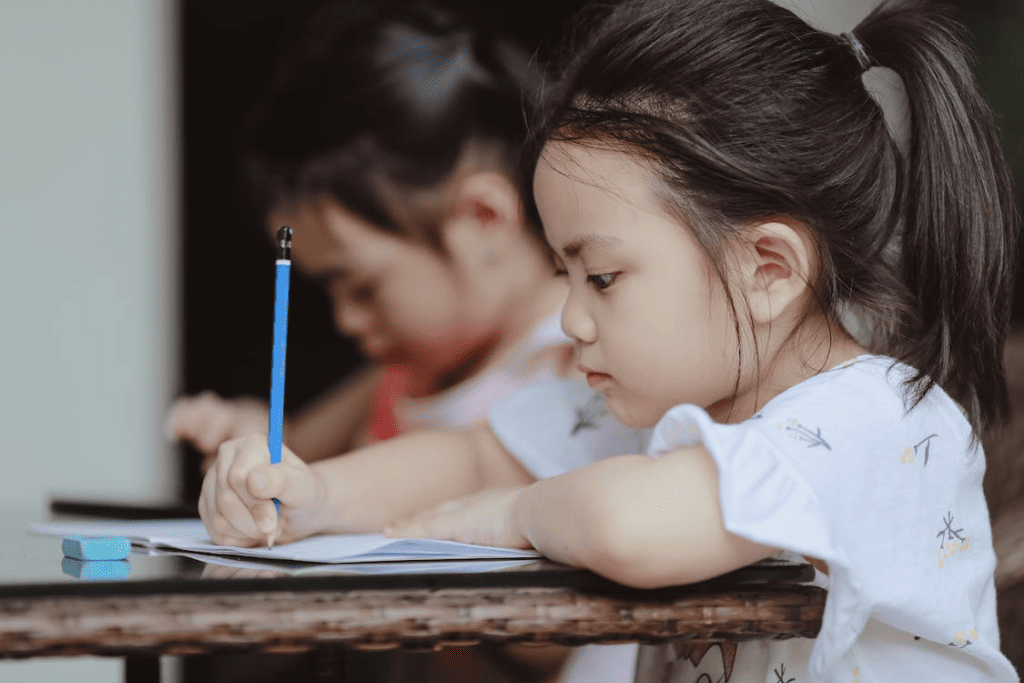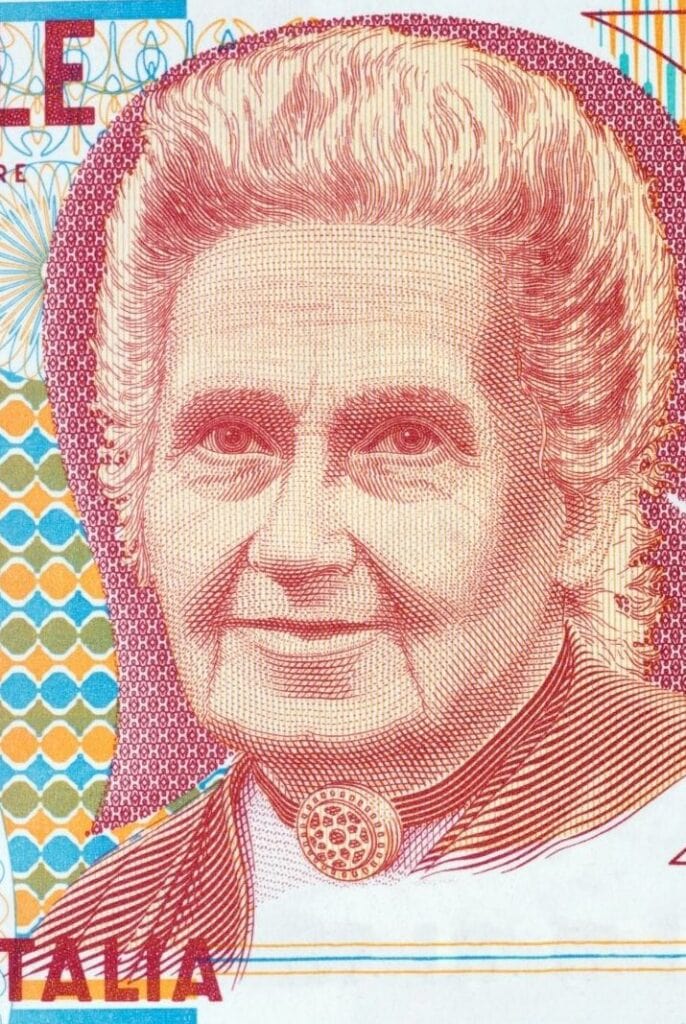Erik Erikson was a German American psychologist who was active from the 1930’s until his retirement in 1970. “Identity” is a key theme in Erikson’s theory of development, which was influenced by both Sigmund Freud and Maria
Erikson’s theory is based on the idea that development is based on conflict-related stages, which differentiate between positive and negative social forces and outcomes. The main difference between Erikson and
Erikson’s strength is in how he clearly and convincingly illustrates the needs and expectations of each of the 8 stages of development.

Erik Erikson
Erikson never knew his biological father. His mother was Jewish but his father was not, which was problematic in soon-to-be-Nazified Germany. His mother remarried and he was raised in America (after a short time in Vienna) by what he believed to be his biological father, until late in his childhood.
Given this, we can see why “identity” was a central notion of his theory of development and how he notably coined the term “identity crisis”. He had no formal higher education and held no higher degree, but was a professor at Harvard and Yale, nonetheless.
In the 1950s, Erikson presented his theory of the stages of psychosocial development. By taking into account diverging perspectives in a given stage of life, we identify and acquire virtues that lead to a meaningful and fulfilling life. This is an idea he took from Freud as well as
While his stages of development are unique, in many ways, it is important to note that
Nonetheless, it is helpful to examine how carefully and articulately Erikson lays out these stages of development. So, let us examine Erikson’s stages carefully before we reflect on their relevance to the
Erikson’s 8 Stages of Development From Birth to Death
Erikson agrees with
- A conflict
- An existential question to bring the conflict into focus
- A virtue that is gained by resolving the conflict.
Erikson lists the 8 stages as:
Stage 1: Trust vs Mistrust. (Infancy).
The existential question that is identified at this stage is, “Can I trust the world?”
In this phase, we learn to provide for our safety by recognizing who we can trust. This not only includes who we trust now but learning who we can trust in the future. Fear leads to doubt and mistrust. Therefore, our instinct is to seek safety.
Our mother is the first key we typically find in establishing the idea of trust and safety.
The virtue that is identified and developed at this stage is hope.
We know nothing, we can do little, and we are at the mercy of others. At this point, “hope” is the only positive force we can look to, given our limitations. If basic physical and emotional needs are not met, a child may become distrustful of the world at large. This includes feeding, providing a comfortable environment, and how a mother responds to her child’s cries.
Stage 2: Autonomy vs Shame and Doubt (Early Childhood 2-4 years)
Existential Question: Is it okay to be me?
During this stage, we are discovering our physical bodies and learning to be comfortable with them. Being allowed to discover this freely leads to self-confidence. If we do not successfully do this, we end up feeling shame and self-doubt. Both parents are important in this phase.
The virtue that is developed at this stage is “will”.
Independence is acquired. Determination and pride in accomplishment are developed. Skills learned include getting dressed, potty training, and basic hygiene.
Stage 3: Initiative vs Guilt (preschool years 4-5)
Existential Question: What things are okay for me to do?
This stage involves understanding fundamental actions and learning basic things about how the physical world works (i.e, things fall down, balls roll, rubber is bouncy, etc.). Being encouraged at this stage develops confidence, and thus we find what interests us as individuals. If we are discouraged, we develop feelings of guilt. At this stage, the entire family is part of the learning process, not just the parents.
The virtue that is developed at this stage is purpose.
Skills acquired include using tools, riding a bicycle, exploring places, things or ideas, drawing, etc. At this stage, it is important to allow a certain level of freedom for children to explore these things. Play is an important part of this stage.
Stage 4: Industry vs. Inferiority (school age 5-12 years)
Existential Question: Can I make it in this world? How do I fit in with other people and things?
Differentiating ourselves from others based on our unique interests is a key aspect of this stage. Taking pride in the correct execution of activities gives us direction. At this point, we begin to think about our prospects for the future in society. Will we be successful in our chosen goals?
The virtue that is developed at this stage is competence.
Being recognized by peers and authority figures will lead us to be hardworking and industrious. Excessive negativity or criticism during this phase can cause a loss of motivation and feelings of inferiority. At this point, society, in general, is a greater influence than the family, particularly school, friends, and other outside figures. It is also during this stage that children begin to recognize other cultures and appreciate differences in groups of people and things. At this stage, they develop athletic skills via sports and academic skills at school.
Stage 5: Identity vs Role Confusion (Adolescence 13-19 years)
Existential Question: Who am I and who can I be?
During this stage, we are mostly learning our wider roles in society. For example, being a friend, a student, a citizen, etc. At this point, it is not uncommon to experience Identity Crisis. If our parents and authority figures allow room for exploration at this stage, we find our unique personal identity. If however, they encourage conformity or discourage our chosen identity, we face confusion, anxiety, and various psychological affliction. At this point, our peers and role models are the primary source of learning.
The virtue that is developed at this stage is fidelity.
We learn the value of friendship, honesty, and loyalty. At this point, we begin to focus on how we appear to others. Groups, religion, and politics begin to enter the picture. Deeper Social relationships outside the family begin to form. In this way, we learn to relate to others.
Stage 6: Intimacy vs Isolation (Early Adulthood 20-40 years)
Existential Question: ” Can I Love?”
During this phase, our identity becomes more stable, and as such, we tend to lose some of the relationships we established earlier, in an effort to fit into the larger society. Romantic love and the corresponding relationships become an important aspect of our lives. If we form these relationships, we will be happy and confident. If we do not, we could end up feeling lonely and isolated. Friends and partners are now the greatest influence in our development.
The virtue that is developed at this stage is love.
We learn to make serious commitments at this stage. Learning to reciprocate is important. Romantic relationships are key.
Stage 7: Generativity vs Stagnation (Adulthood 40-65)
Existential Question: “How Can I make my life count?”
We should, by this time, have found some level of contentment and comfort in life. At this point, we might decide to use what free time we have to engage in creative or personal projects. We also typically begin to contribute more regularly to society. At this point, we begin to think about our legacy and what we might contribute to future generations. If we feel confident and secure in guiding future generations, we will be generally happy. If, however, we failed to properly develop in earlier stages, we can become negative and pessimistic and stop growing. We are now influenced primarily by people at work and those we live with.
The virtue that is developed at this stage is care.
Guiding and mentoring younger folks is a key skill learned at this stage. We are asking at this point how we might give our life meaning and purpose. Parenthood and work are the primary places we find this. It is important at this stage to avoid selfishness if development is to progress.
Stage 8: Ego Integrity vs Despair (maturity 65-death)
Existential Question: Is it ok to have been me?
At this point, our physical activity level slows down and mentally, we begin to reflect on how we’ve lived our lives. If we think we have lived a well-developed life, we find integrity and contentment. If we have not, we might find ourselves becoming an embittered curmudgeon. We now compare ourselves with the rest of humanity and reflect on the meaning or purpose of the life we’ve lived.
The virtue that is developed at this stage is wisdom.
This phase typically takes place during retirement. People become retrospective and look back on the meaning of life and the world as well as their own personal meaning and purpose.
“Integrity” is acquired at this point. By integrity, we don’t mean the ethical notion of honesty or fidelity, but rather that we have “integrated” ourselves and our knowledge with society and the world at large. If we have no accomplishments to be proud of to reflect on, we may end our days in despair. But if integration is achieved we can look back on our lives with joy and satisfaction.
STAGE 9: Posthumous Addition (Old age 80s-90s)
This stage was added by Erikson’s wife, Joan Erikson, in “The Life Cycle Completed (ext. version)”, so it may be taken with the proverbial grain of salt. Erikson worked as an academic partner with his wife during his lifetime. After his death, she added a stage of development that reflects the fact that people are living longer than they used to.
Stage nine posits that older adults revisit the stages in reverse order. Example: as a person’s body deteriorates, they may ultimately find themselves back in the trust/mistrust stage, as they are not sure whether to trust their own abilities anymore.
Maybe their memory is failing, or they can’t quite manage to accomplish the simple physical tasks they used to do with ease. A short jog, a hike, or a trip to the batting cages is no longer a thrill, it’s a danger. They may experience shame and revisit that stage, as they lose control of their bodily functions.
This ninth stage has been criticized by some for many reasons, one being that it seems to leave us on a “sour note” that seems somewhat depressing when compared to the wise and reassuring reflections of stage eight. For completeness’ sake, it is presented for your consideration.
Criticisms of Erikson Addressed by the Montessori Method
Did you notice something missing when I described the three key things identified in Erikson’s theory? I noted that he identified three things in each stage: “A conflict, an existential question to bring the conflict into focus, and a virtue that is gained by resolving the conflict.” But he never told us HOW to resolve the conflicts. That means that the methods for moving from one stage to another are not clearly defined. The
For example, the four planes of development in the
Of course, these activities and planes are based on scientific principles developed by
The
In much the same way,
Another criticism is that Erikson’s theory focuses too much on the social expectations of certain cultures. The
Here we can see how
Piaget, Vygotsky, Erikson, and Montessori
Piaget taught us many lessons about the psychological development of children and the human mind. In particular, he taught us the value of sequential stages of development.
Vygotsky taught us the value of social interaction in development but ignored the stages of development.
Erikson gives us a clear, socially relevant picture of healthy human development, but doesn’t really give us the method to achieve it. This is where we find the ultimate value in Maria
Not only does







